One of Blasphemous 2’s major innovations on the first game is the addition of different weapons the player can use. Gone is the Mea Culpa sword, the Penitent One’s faithful friend throughout the horrors of the first Blasphemous, and in its place stand three spry new challengers: the Veredicto mace, the Sarmiento and Centella dual blades, and the Ruego Al Alba sword. Choosing between these three starting weapons is the first major decision you’ll make in Blasphemous 2, and it’s a choice that can be the difference between having a great time with the game and bouncing off right away. Which starting weapon should you pick in Blasphemous 2? Read on to find out.
Which weapon should you choose at the start of Blasphemous 2?
We’d recommend either Veredicto or Sarmiento and Centella, since they provide more specific, and ultimately powerful, playstyles than Ruego Al Alba does. They represent both ends of the ARPG gameplay spectrum, so if you’re used to playing slow, heavy-hitting weapons, go with Veredicto, and if you’re used to being quick and agile, go Sarmiento and Centella. Ruego Al Alba is, of course, completely viable for the duration of the game, but in my opinion it pales in comparison to the other two options available. Choose one of these at the start, and you’re in for a great time with Blasphemous 2.
Veredicto
Going in order of appearance, we’ll kick off our guide with the Veredicto mace. This is Blasphemous 2’s version of the classic slow-but-powerful weapon archetype: a mace that can deal huge damage to enemies, with the downside of having a big windup for each attack. This means that you really need to learn the timings of enemy attacks to succeed with this weapon: spamming attack will get you killed more often than not.
This means that, paradoxically, Veredicto is a weapon for both patient and impatient players. You need to be patient to find and exploit the openings necessary for its long attacks, but impatient to enjoy the huge damage that ends many fights quicker than other weapons would. This is particularly noticeable during boss fights.
It’s also worth noting that Veredicto is the only one of the three starting weapons that can access its ‘alternate state’ right off the bat. While you’ll need to progress the skill trees of Sarmiento and Centella and Ruego Al Alba to unlock their Verdadera Destreza and Blood Pact skills, respectively, Veredicto lets you ignite it for extra damage immediately, as well as charge up your standard attack for a big hit. This makes Veredicto the most complex of the starting weapons, with the most depth to its initial moveset: far from the brute force image usually attached to heavy-hitting weapons of its like.
That said, it also gains the least from its skill tree. It gets the usual passive damage buffs and boosts to the efficiency of the ignited state, but it doesn’t evolve as it goes like the other two weapons. This isn’t a downgrade so much as a sidegrade, reaching the same point as its peers earlier rather than later. For this reason, Veredicto is probably the most powerful of the three starting weapons for the early game, with the trade-off that it becomes less impressive later, particularly when bosses get faster and their openings get tighter. If you’re a fan of strength builds in Souls games and the like, then Veredicto will give you a very similar experience in Blasphemous 2. It’s a great early-game choice, and a surprisingly complex weapon with a high skill ceiling.
Sarmiento and Centella
From one extreme to the other, Sarmiento and Centella is a weapon that can dish out very quick attacks that deal very little damage. Whereas Veredicto discouraged it, spamming the attack button is actually the ideal way to play with these dual blades, as it allows you to squeeze in the maximum number of hits possible. It also plays very nicely with their special ability: Verdadera Destreza.
Once unlocked via the skill tree, this ability lets you build up energy with each hit dealt to an enemy, applying a lightning buff to your weapon after a certain threshold is reached. In many cases, this more than doubles your damage output, particularly if you make use of Statues that increase your elemental damage. The downside to this ability is that your energy gauge is fully depleted if you take so much as a single hit, meaning you’ll need to be adept at avoiding damage to get the most out of it.
While it’s easy to just wail away on enemies with the high attack speed Sarmiento and Centella offers, doing so will get you hit, and prevent you from reaching the heightened lightning state where it really shines. For this reason, you’ll need to master the timings for jumping over and sliding through each enemy’s attacks if you plan on choosing this as your starting weapon. These are valuable skills for any playstyle, but doubly so here, since you can easily lose out on a huge chunk of damage due to sloppy play: something users of the other two weapons don’t need to worry about as much.
Sarmiento and Centella is the most adaptable weapon in Blasphemous 2’s starting arsenal, letting you land quick hits almost constantly due to its high attack speed, while rewarding cautious play with a big damage boost that can lead to some frighteningly fast boss kills if used well. If you’re always getting caught on annoying attacks, or if you hate spamming buttons in combat, this may not be the weapon for you, but otherwise it gives you a ton of flexibility in combat, and can lead to some overall great results.
Ruego Al Alba
Finally, we have the balanced option: the fairly standard Ruego Al Alba sword. This weapon doesn’t push you into a particular playstyle like the other two with its basic attacks, but it does have perhaps the most interesting special ability of all three in Blood Pact. After building up a constantly-depleting gauge with successive attacks, you can trigger the Blood Pact state by sacrificing a chunk of health.
Once you do, you’ll gain a nice damage boost in the form of Mystical damage, as well as the ability to regain health with each successful hit, helping to mitigate the up-front health costs you paid to activate Blood Pact in the first place. In practice, this plays like a combination of Veredicto and Sarmiento and Centella’s abilities, giving you a temporary boost as a reward for landing consecutive hits on enemies. Unfortunately, the difficulty of building up the gauge and finding a window in which to activate Blood Pact, as well as landing enough hits during that time to balance out the health you gave up for it, makes it difficult to get full value from.
Ruego Al Alba does get a nice suite of combo attacks, making it capable of tearing through normal enemies with ease once you’ve mastered them, but when it comes to its base attacks and special ability it lags behind the other two starting weapons considerably. It’s the hardest of the three to play well, without a huge increase in power even at the high end, and for that reason we’d advise going for either of the other two weapons unless you’re specifically looking for a challenge.
For more in-depth info and impressions, check out our full Blasphemous 2 review.

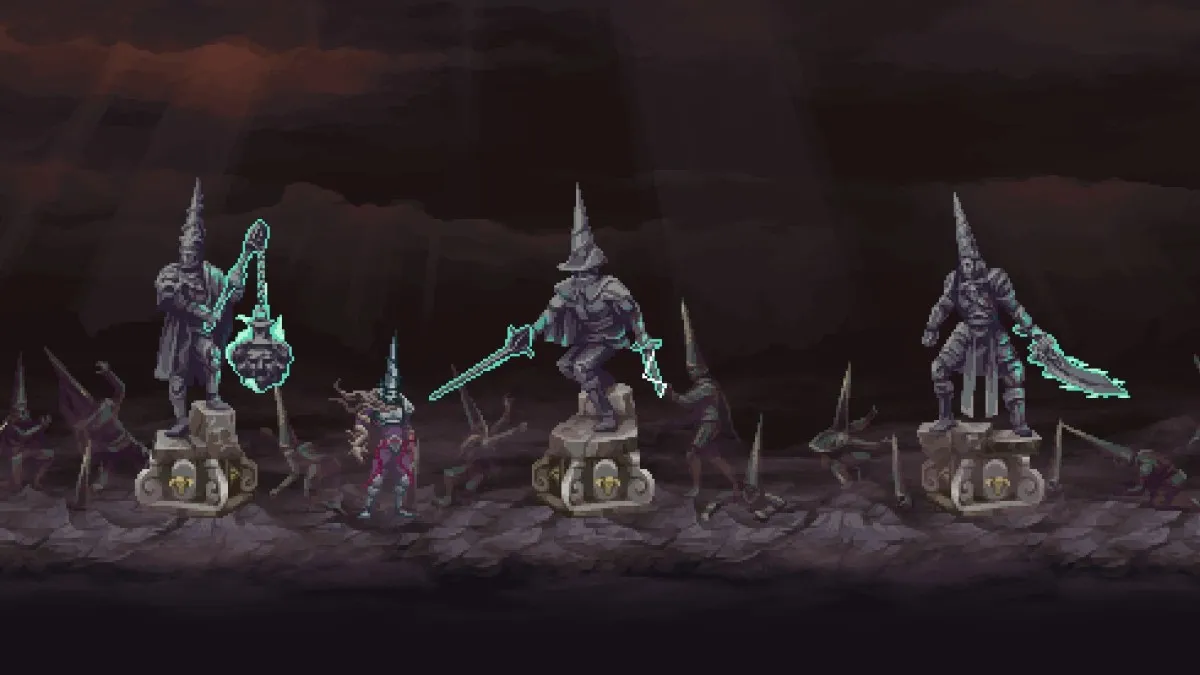
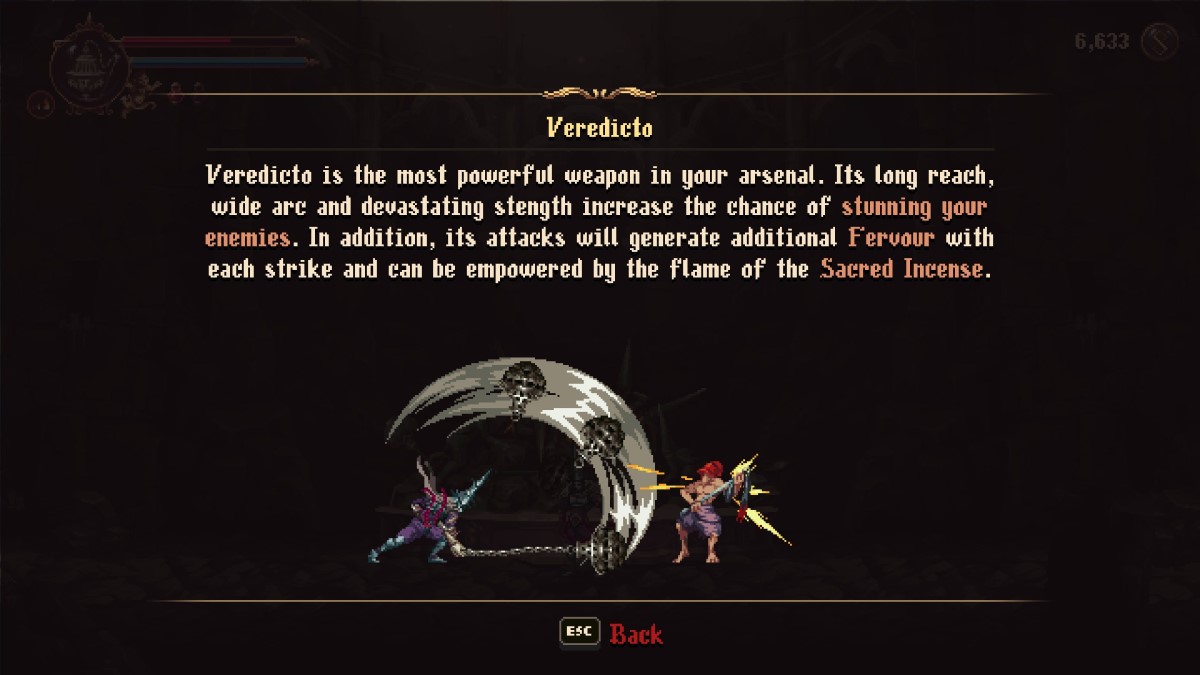
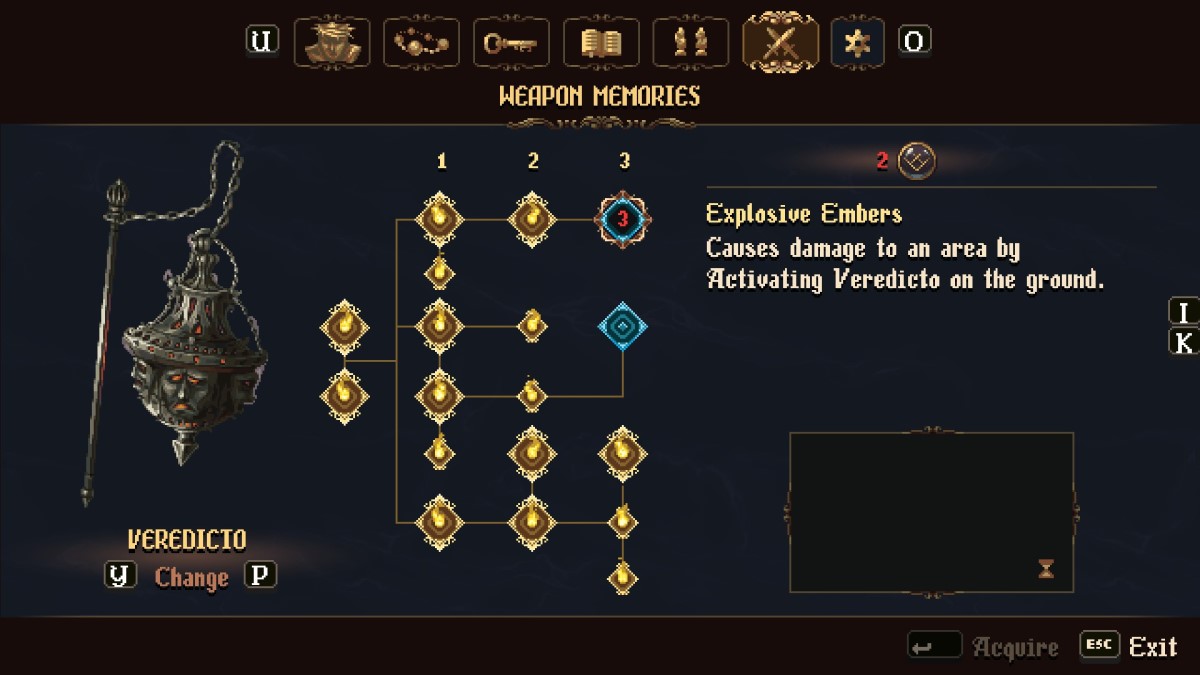
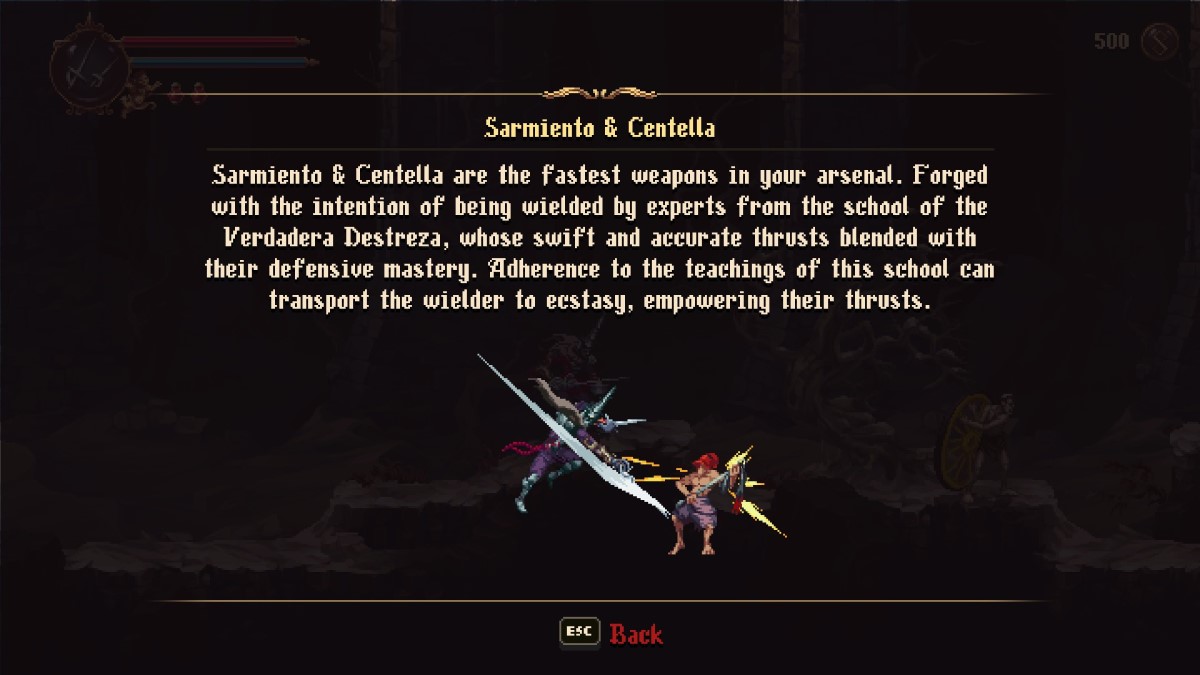
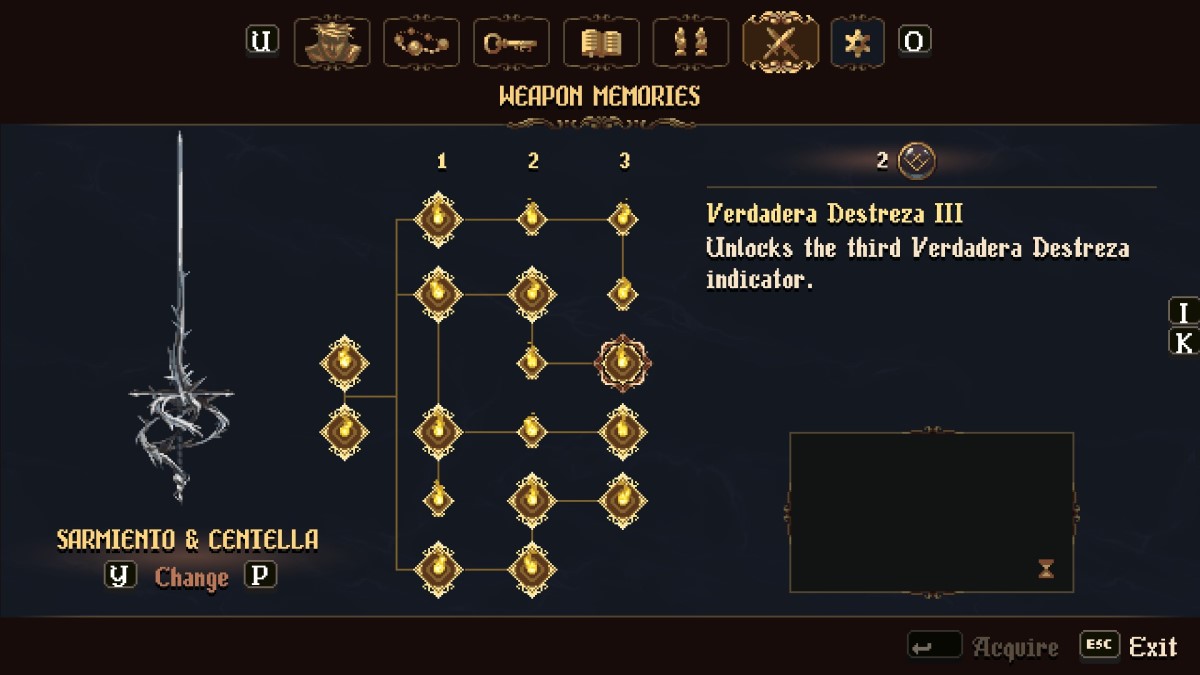
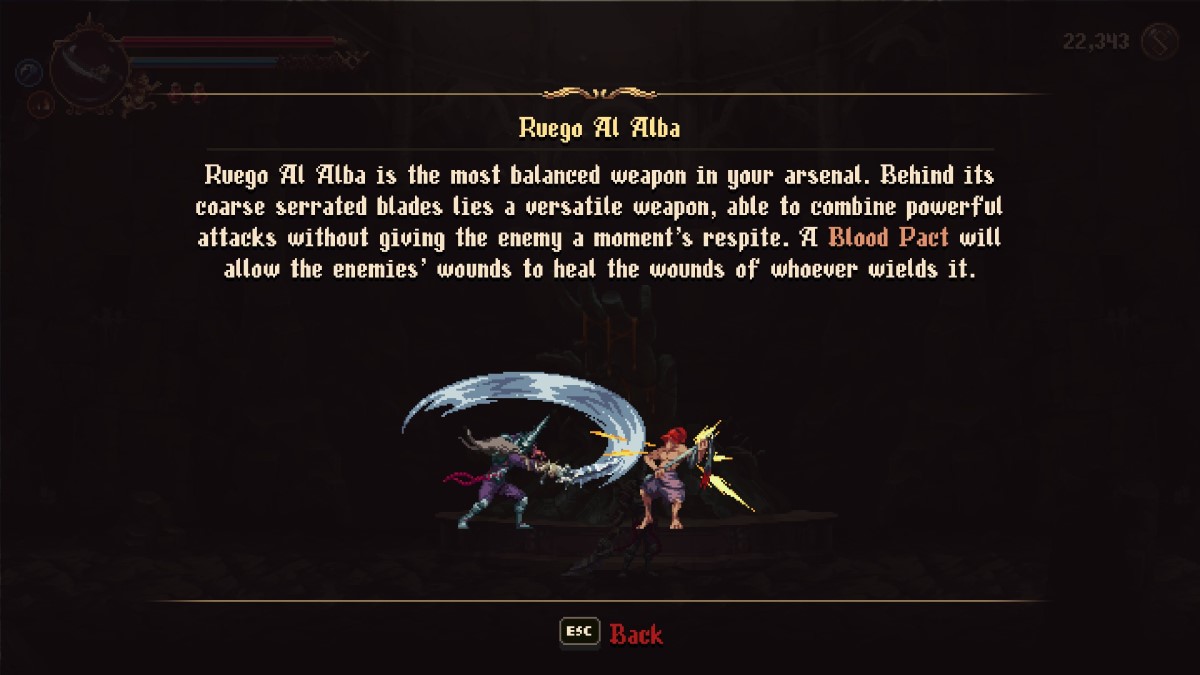
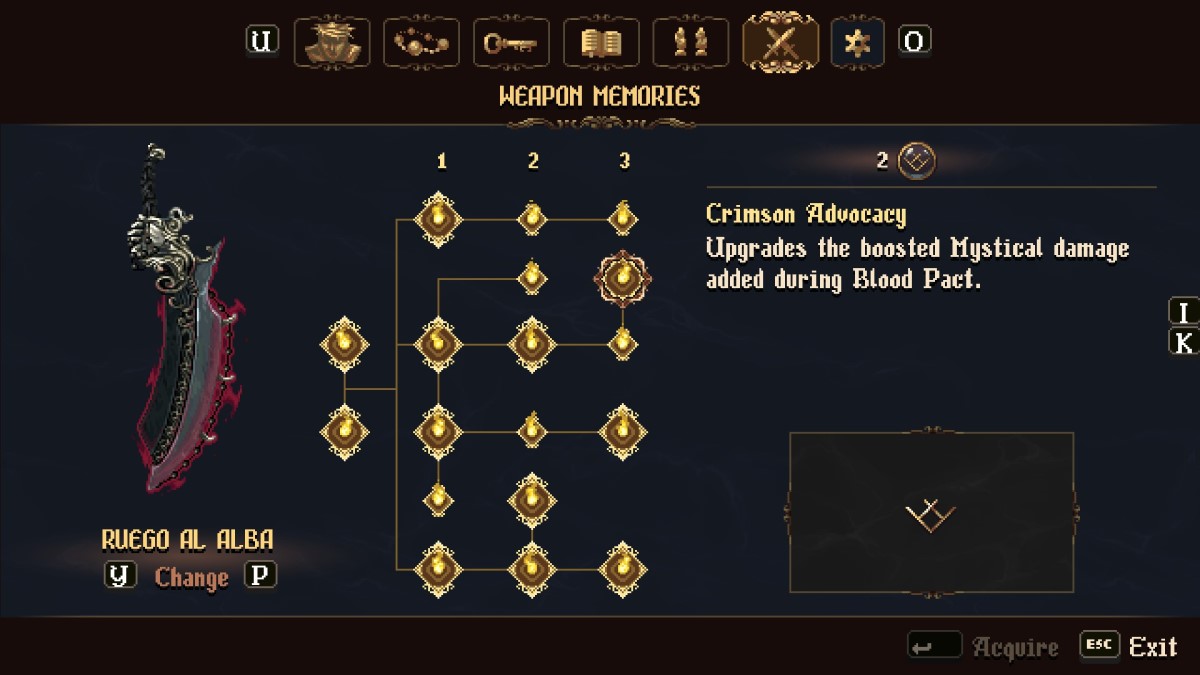





Published: Aug 24, 2023 05:00 am